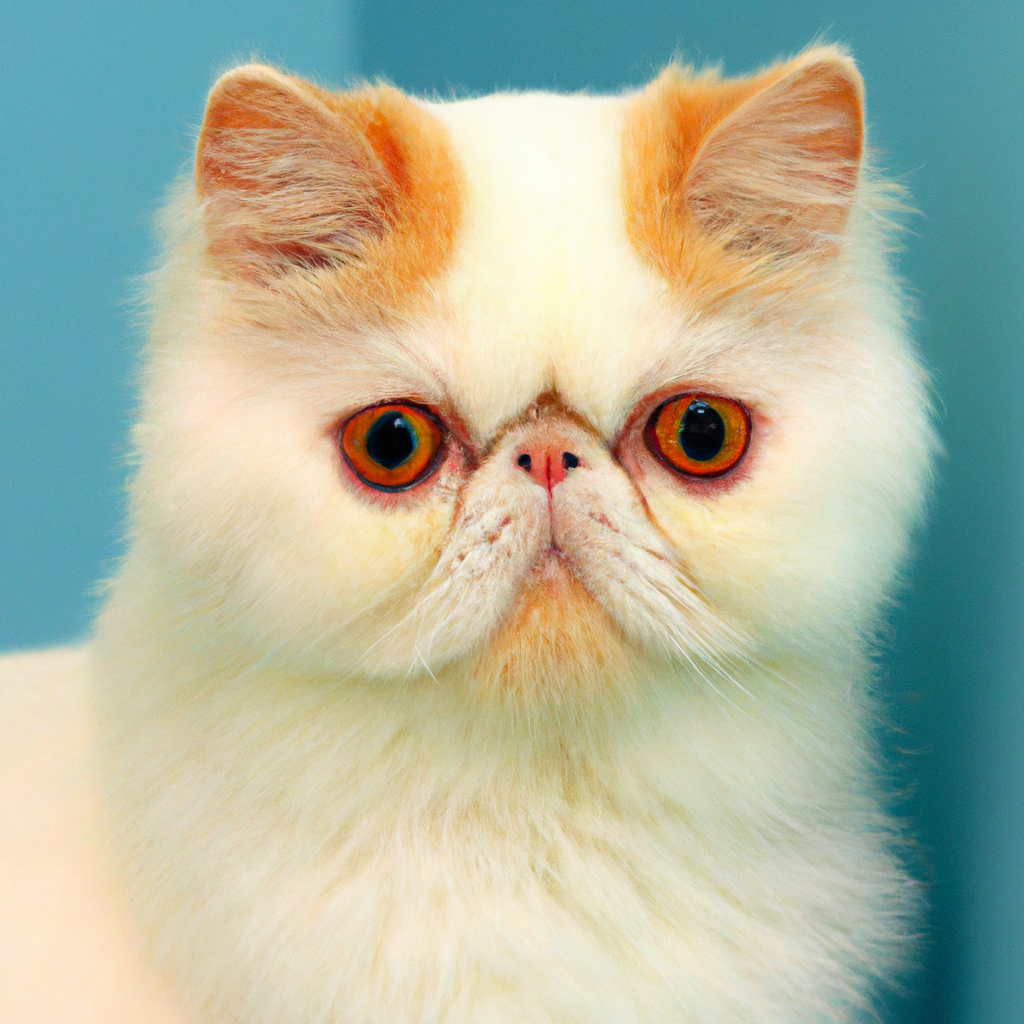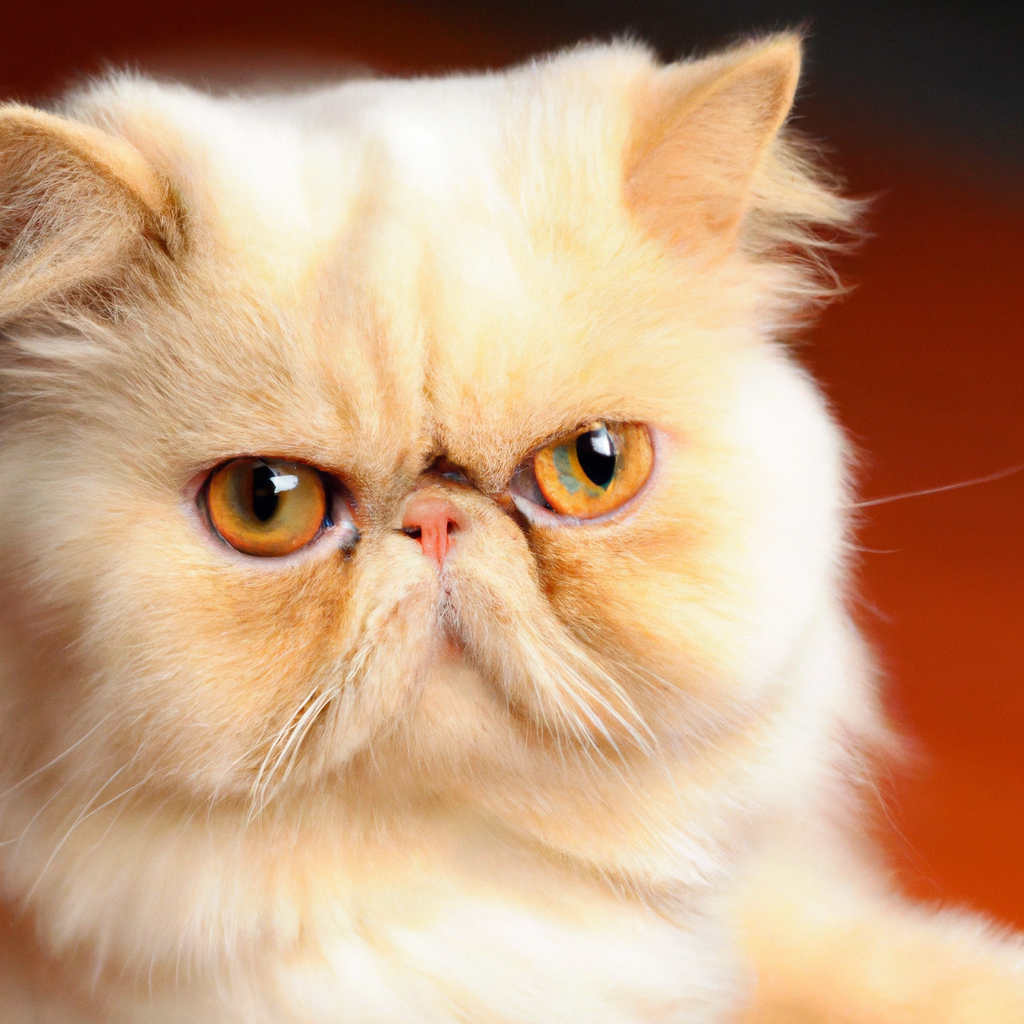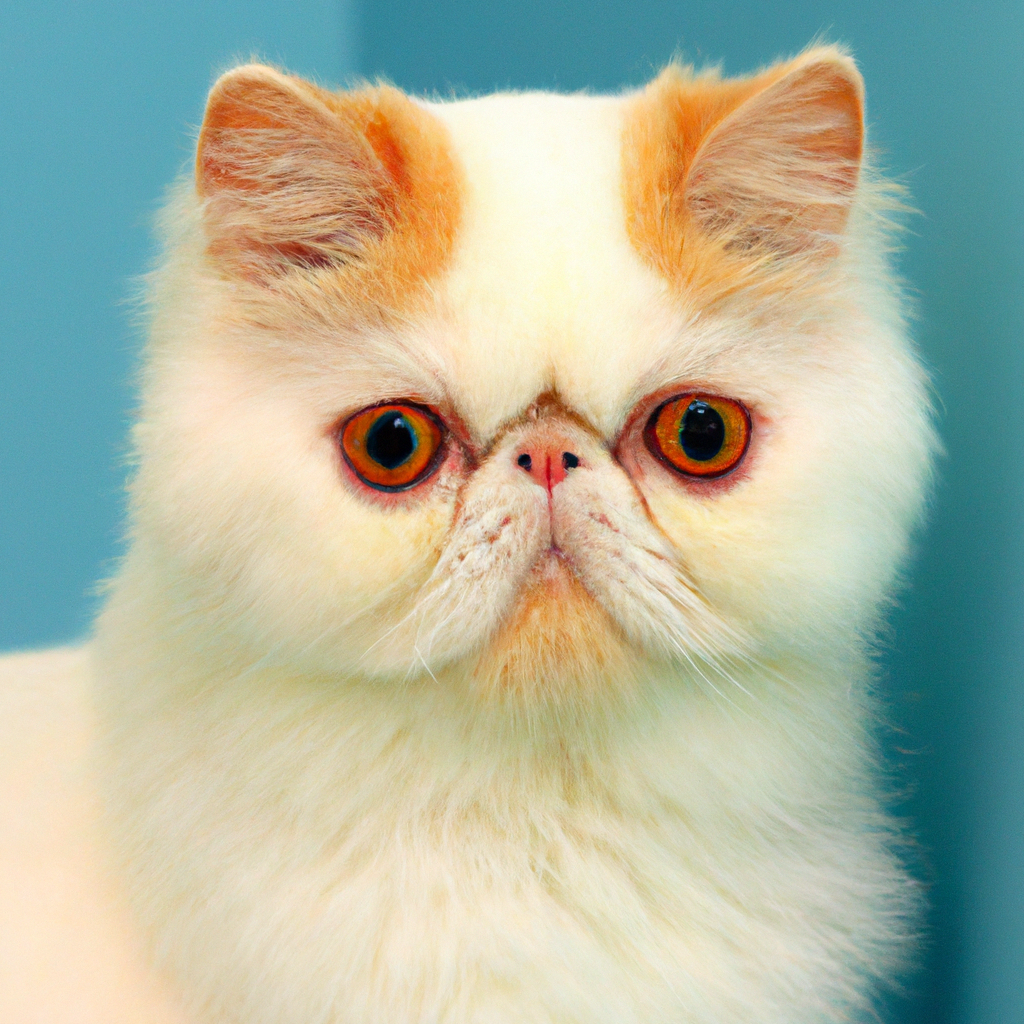Have you recently welcomed a Persian cat into your home? Congratulations! In this article, we will provide you with essential tips and guidance on how to properly care for your new feline friend. From grooming to nutrition, we’ve got you covered. So, grab a cup of tea, find a cozy spot, and let’s begin this exciting journey of Persian cat care together!
Grooming
Taking care of your Persian cat’s grooming needs is essential to maintain their luxurious coat and overall health. Here are some important aspects of grooming to keep in mind.
Brushing
Regular brushing is a vital part of a Persian cat’s grooming routine. Their long and thick fur is prone to matting and tangling. To prevent this, you should brush your cat’s fur daily using a wide-toothed comb or a stainless steel brush specifically designed for long-haired cats. Brushing not only helps to remove loose hair and prevent matting but also stimulates the skin and promotes blood circulation.
Bathing
While Persian cats are known for their cleanliness and usually groom themselves, they may occasionally require a bath. Bathing helps to remove dirt, oils, and debris that can accumulate in their fur. It’s important to use a gentle cat shampoo and warm water when bathing your Persian cat, ensuring you avoid getting water in their eyes and ears. Be sure to thoroughly dry them afterward to prevent any discomfort or chilling.
Eye and ear care
Persian cats are prone to tear staining, which can cause reddish-brown stains around their eyes. To prevent this, gently wipe their eyes daily with a soft, clean cloth dampened with warm water or a mild saline solution. Additionally, regular ear cleaning is essential to prevent wax buildup and potential infections. Use a cat-specific ear cleaner and cotton balls, being careful not to insert anything deep into the ear canal.
Nail trimming
Trimming your Persian cat’s nails is an important part of their grooming routine and helps prevent scratching-related accidents. Use a pair of cat nail clippers to carefully trim the tips of their nails, avoiding the quick, which is the pink area that contains blood vessels and nerves. If you’re unsure about nail trimming, consult your veterinarian or a professional groomer for assistance.
Nutrition
Providing your Persian cat with a balanced and nutritious diet is crucial for their overall health and well-being. Here are some key considerations when it comes to nutrition.
High-quality cat food
Opt for high-quality cat food specifically formulated for Persian cats. Look for options that contain a balance of protein, carbohydrates, and fats, with real meat as the primary ingredient. Avoid cat foods that contain excessive grains or fillers. Consult your veterinarian for specific dietary recommendations based on your cat’s age, weight, and any underlying health conditions.
Feeding schedule
Establishing a consistent feeding schedule is beneficial for your Persian cat’s digestion and weight management. Divide their daily food portion into two or three smaller meals spread throughout the day. This prevents overeating and helps maintain their energy levels. Avoid leaving food out all day, as it can lead to excessive weight gain or attract pests.
Avoiding toxic foods
Certain human foods can be toxic or harmful to cats. It’s important to avoid feeding your Persian cat foods such as chocolate, onions, garlic, grapes, raisins, caffeine, and alcohol. Additionally, be cautious of using artificial sweeteners that contain xylitol, as it can be toxic to cats. Stick to a cat-specific diet to ensure their nutritional needs are met.
Providing fresh water
Always ensure your Persian cat has access to fresh and clean water. Cats, like humans, need to stay hydrated to maintain their overall health. Change the water in their bowl daily and consider providing a water fountain, as some cats prefer running water. If you notice your cat isn’t drinking enough water, consult your veterinarian for further guidance.

Exercise and Play
Keeping your Persian cat physically active and mentally stimulated is essential for their overall well-being. Here are some tips for providing exercise and play opportunities for your feline companion.
Indoor vs. outdoor
Persian cats are generally better suited for an indoor lifestyle. Their long fur makes them more susceptible to weather-related discomfort and potential dangers outside. Designate a safe and enriching indoor space for your cat to explore, incorporating various toys and activities to keep them engaged and entertained.
Interactive toys
Interactive toys such as puzzle feeders, treat-dispensing toys, and toys with feathers or bells can provide mental stimulation and physical exercise for your Persian cat. Allow them to chase and pounce on toys, mimicking their natural hunting instincts. Rotate the toys regularly to maintain their interest.
Playtime routines
Establishing a regular playtime routine with your Persian cat can help them burn off excess energy and strengthen the bond between you. Set aside dedicated play sessions each day, incorporating activities such as feather wands, laser pointers, or interactive toys. Aim for at least 15-20 minutes of active playtime, ensuring that you supervise closely and provide a safe environment.
Encouraging activity
Encourage your Persian cat to be active throughout the day by providing vertical spaces to climb, scratch posts, and hiding spots. Engage in interactive play regularly and create opportunities for them to explore and engage their natural curiosity. By encouraging physical activity, you can help prevent obesity and promote a healthy lifestyle for your furry friend.
Healthcare
Ensuring your Persian cat receives proper healthcare is vital in maintaining their overall well-being. Here are some important aspects to consider when it comes to their healthcare needs.
Routine vet visits
Regular veterinary check-ups are crucial for keeping your Persian cat healthy and catching any potential health issues early on. Schedule routine visits with your veterinarian, typically once or twice a year, for comprehensive examinations and vaccinations. During these visits, your vet can monitor your cat’s weight, dental health, and overall condition, providing necessary preventive care.
Vaccinations
Vaccinations play a key role in protecting your Persian cat from various infectious diseases. Your veterinarian will provide a vaccination schedule tailored to your cat’s specific needs and potential exposure risks. Common vaccinations for cats include those for feline panleukopenia, herpesvirus, calicivirus, and rabies. Stay up-to-date with the recommended vaccination protocols to ensure your cat remains protected.
Parasite prevention
Fleas, ticks, and internal parasites can pose significant health risks to your Persian cat. Regular use of veterinarian-recommended flea and tick preventives is essential to safeguard your cat from these pesky parasites. Additionally, routine deworming treatments help eliminate and prevent intestinal parasites. Consult your veterinarian for appropriate preventive products and a schedule suitable for your cat.
Understanding common Persian cat health issues
Persian cats are known to be prone to certain health issues, including eye conditions, dental problems, and respiratory issues due to their unique facial structure. Familiarize yourself with common Persian cat health concerns such as tear duct obstruction, polycystic kidney disease (PKD), dental tartar buildup, and brachycephalic syndrome. Regular veterinary check-ups and early detection can help manage and treat these conditions effectively.

Litter Box Training
Proper litter box training is essential to ensure your Persian cat maintains good hygiene and uses the litter box consistently. Here are some tips to help you with litter box training.
Choosing the right litter box
Select a litter box that is appropriately sized for your Persian cat. Opt for a box with low sides or an open-top design to accommodate their long fur and prevent any difficulties when entering or exiting. Consider using a litter box with a cover or hood if your cat prefers privacy.
Placement and accessibility
Place the litter box in a quiet and easily accessible area of your home. Avoid placing it near their food or water bowls. Persian cats appreciate a clean and private space, so ensure the litter box is located away from high-traffic areas and loud noises.
Regular cleaning
Clean the litter box regularly to maintain proper hygiene and prevent odors. Scoop out solid waste daily and replace the litter as needed. Wash the litter box with mild, unscented soap and warm water on a regular basis. Cats are naturally clean animals, and a consistently clean litter box encourages them to use it consistently.
Addressing litter box problems
If your Persian cat develops litter box problems such as avoiding the litter box, urinating outside the box, or exhibiting signs of distress while using it, it’s important to investigate and address the underlying cause. Potential reasons for litter box issues include urinary tract infections, stress, dirty litter, or changes in the environment. Consult your veterinarian if you need assistance in identifying and resolving litter box problems.
Socialization
Socializing your Persian cat from an early age is crucial in helping them develop into well-adjusted and friendly companions. Here are some tips for socializing your Persian cat.
Introducing to new environments
Expose your Persian cat to various environments, sounds, and objects from a young age. Gradually introduce them to new experiences, such as car rides, meeting new people, and encountering other animals. Positive exposure during the early stages of their life helps them adapt better to new situations in the future.
Positive reinforcement
Reward and praise your Persian cat for desired behaviors and calm responses to new experiences. Use treats, toys, and verbal appreciation to reinforce positive behaviors. This positive association helps your cat feel more comfortable and confident in different social situations.
Interaction with other pets
If you have other pets in your household, ensure positive interactions between them and your Persian cat. Monitor their initial introductions, providing a controlled and supervised environment. Gradually increase their time together, allowing them to establish positive relationships and bond over time.
Handling and gentle touch
Frequently handle your Persian cat, gently touching their paws, ears, and tail. This helps them become accustomed to human touch and handling, making vet visits and grooming sessions less stressful. Gradually increase the duration and intensity of handling to ensure your cat remains comfortable and trusting.
Creating a Safe Environment
Building a safe environment for your Persian cat is crucial to prevent accidents and keep them protected. Here are some important considerations when creating a safe space for your feline friend.
Cat-proofing the home
Remove any potential hazards from your home that could harm your Persian cat, such as loose electrical cords, toxic plants, or small objects that could be swallowed. Secure cabinets and drawers that contain harmful substances or fragile items that could be knocked over. Conduct a thorough inspection to identify and address any potential dangers.
Hazardous plants and substances
Certain plants, such as lilies, are toxic to cats and can cause severe health issues if ingested. Keep your Persian cat away from such plants and replace them with pet-friendly alternatives. Additionally, be cautious of household substances like cleaning agents, medications, and chemicals, which should be stored securely out of your cat’s reach.
Securing windows and balconies
Ensure all windows and balconies in your home are securely screened and properly sealed. Persian cats may be curious and attempt to explore high places, which can pose a significant risk of falls and injuries. Install sturdy screens or provide secure enclosures that allow your cat to enjoy outdoor spaces safely.
Providing hiding spots
Create safe hiding spots for your Persian cat, as they appreciate having their own quiet and secure space. Provide cozy beds, cat condos, or elevated perches where they can retreat when they feel the need for alone time. Hiding spots also help them feel more secure during stressful situations or when introduced to new people or pets.
Managing Shedding
Persian cats are known for their beautiful, but abundant, fur. Proper management of shedding can help keep their coat healthy and minimize the presence of loose hair in your home. Here are some tips for managing shedding in Persian cats.
Regular brushing
Brush your Persian cat’s fur regularly to remove loose hair and prevent matting. Use a slicker brush or a wide-toothed comb to gently work through their long hair, paying extra attention to areas prone to matting, such as the armpits and belly. Brushing also stimulates the skin and distributes natural oils, promoting a healthy coat.
Minimizing stress
Stress can contribute to excessive shedding in cats. Provide a stress-free environment for your Persian cat, minimizing any potential sources of anxiety. Maintain a consistent routine, provide ample play and enrichment opportunities, and ensure they have a calm and comfortable space to relax and unwind.
Proper diet and hydration
A balanced and nutritious diet plays a crucial role in maintaining a healthy coat and minimizing excessive shedding. Ensure your Persian cat’s diet includes high-quality protein sources, essential fatty acids, and proper hydration. Consult your veterinarian for dietary recommendations specific to your cat’s needs.
Reducing environmental allergens
Some cats may experience allergies, which can lead to excessive shedding. Keep your home clean and free from allergens like dust, pollen, and mites. Vacuum regularly, wash bedding frequently, and consider using air purifiers to minimize the presence of allergens. Consult your veterinarian if you suspect your Persian cat has allergies that require further evaluation and management.
Behavioral Training
Proper behavioral training helps ensure your Persian cat develops good manners and behaviors that align with your household rules. Here are some tips for behavioral training.
Positive reinforcement techniques
Rewarding desired behaviors is key to effective behavioral training in cats. Use positive reinforcement techniques such as treats, praise, and playtime to reward your Persian cat for good behavior. Reinforce behaviors like using the scratching post, using the litter box, or responding to commands.
Discouraging destructive behavior
If your Persian cat displays destructive behaviors such as scratching furniture or inappropriate chewing, it’s important to redirect their behavior and provide appropriate alternatives. Use deterrent sprays on furniture, provide scratching posts, and interactive toys to keep them engaged and focused on acceptable activities.
Training for grooming and vet visits
Training your Persian cat to be comfortable with grooming and veterinary procedures from an early age can make these experiences less stressful for both of you in the long run. Gradually introduce grooming tools and handling techniques, providing treats and positive reinforcement. Similarly, practice mock vet visits, touching their paws and ears, and rewarding calm behavior.
Using scratching posts
Persian cats have a natural instinct to scratch and maintain their claws. Redirect this behavior to appropriate scratching posts to prevent damage to furniture and other household items. Place scratching posts strategically throughout your home and encourage your cat to use them by gently guiding their paws and providing rewards.
Breeding Considerations
Breeding Persian cats involves careful planning, health screenings, and appropriate care during the pregnancy and birth. If you’re considering breeding your Persian cat, here are some considerations to keep in mind.
Health screenings
Before breeding your Persian cat, it’s essential to conduct thorough health screenings to ensure they are free from genetic disorders or hereditary diseases. Common health screenings for Persian cats include checking for polycystic kidney disease (PKD), hypertrophic cardiomyopathy (HCM), and progressive retinal atrophy (PRA). Consult with a veterinarian who specializes in cat breeding for guidance.
Choosing the right mate
Selecting a suitable mate for breeding is crucial to ensure healthy offspring and maintain the breed’s characteristics. Look for a mate with compatible traits, good health, and a suitable pedigree. Consult with experienced breeders and work closely with your veterinarian to make informed decisions when selecting a mate for your Persian cat.
Understanding pregnancy and birth
Pregnancy in Persian cats typically lasts around 63 to 65 days. During this time, provide appropriate prenatal care, including a balanced diet, regular veterinary check-ups, and a stress-free environment. Ensure you have a comfortable and secluded area for your cat to give birth, providing nesting materials and close monitoring.
Caring for kittens
Once the kittens are born, it’s important to provide appropriate care and socialization. Ensure the mother cat has a quiet and safe space to nurse her kittens, and monitor their health and development closely. Provide a clean and warm environment, socialize the kittens from an early age, and consult with your veterinarian for guidance on vaccinations, deworming, and weaning protocols.
In conclusion, proper care for your Persian cat involves various aspects, from grooming and nutrition to exercise, healthcare, and socialization. By following these guidelines and paying attention to your cat’s individual needs, you can provide a loving and nurturing environment that ensures their well-being and brings you many years of joy and companionship.
